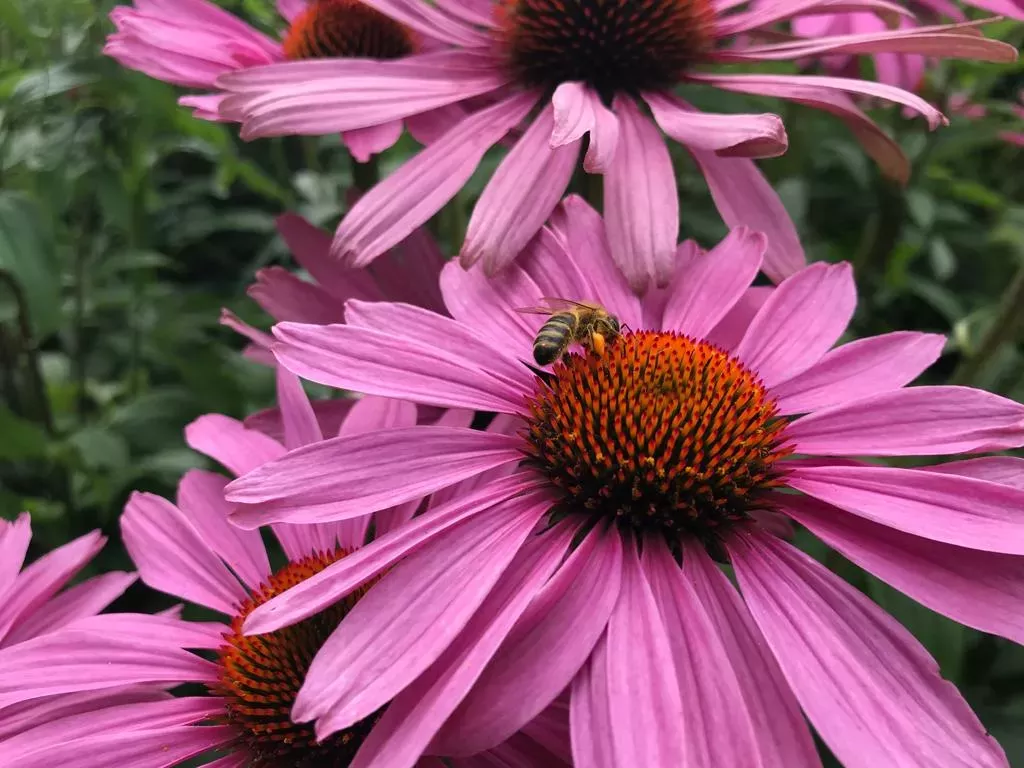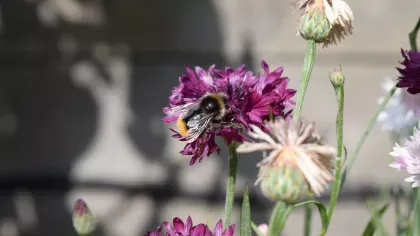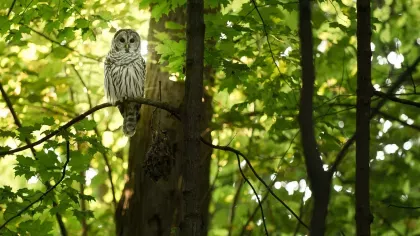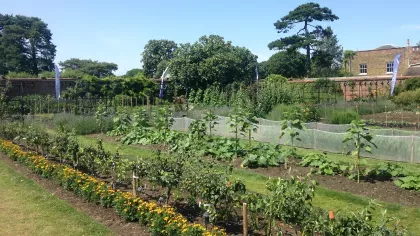1 May 2019
Bees can dance, and other things you didn't know
The honeybee has evolved to communicate through the medium of dance. But all the senses are ignited when it comes to finding the best pollen in a field of flowers.

Pollinators are fundamental to the lifecycle of our plants.
Pollination is the transfer of the pollen grain from the stamen (the male part of the flower) to the stigma and egg (the female part of the flower). It’s how plants spread their seed and grow.
We love our pollinator friends, like butterflies, bats and insects.
But we particularly appreciate bees and the interesting things they do to keep our gardens blooming and help plants to provide us with delicious fruits and vegetables.
But, when a bee finds a new supply of nectar food how does it tell other bees, or nest-mates, where it is?

Dance, dance
The foraging ‘scouts’ of the honeybees can travel up to 14km from their nest to find the best source of nectar.
In order to communicate what they’ve found and where it is, they dance: ‘round dances’ and ‘waggle dances’.
The ‘round dance’ signals to their nest-mates that there is a lucrative pollen area nearby.
The ‘waggle dance’ tells them exactly where it is; how far to go and in what direction the nest mates need to fly.
It helps the colony become efficient, encouraging them to channel their energies towards the more nutritious areas of ground. It means that their hive is usually filled with nectar from healthy, nectar-rich gardens.


You won't bee-lieve that:
- Bees pollinate over 70% of our crops.
- Almonds, apples, blueberries, avocados, cucumbers and oranges are all examples of plants that rely on pollination.
- The Queen bee can lay up to 2,500 eggs a day.
- Some bees have long tongues to help reach the nectar, that is at the bottom of long flowers (corollas).
Follow that scent
Dancing isn’t the only way bees signal to their nest-mates.
A bee can remember the smell of the hive long after they leave it. Their sense of smell also helps to tell if an intruder is in their hive.
Their antennae can follow a scent using about 170 scent receptors, to hone in on exactly where the pollen and nectar they are looking for might be, and also to point them in the direction of home.
What’s more, when a bee is forced to sting, an alarm pheromone is released, sending a message to other bees that something is wrong.

See the rainbow
Bees can also see colour.
They see a different spectrum to humans; ultraviolet light, blue and green (we see blue, green and red).
They are attracted to the vibrancy of the plants that decorate our grounds, particularly to the blue tones.
The iridescence on a flower is much clearer to a bee than the human eye. Some flowers also use ultraviolet light in order to attract their pollinator. That UV light acts as a map, guiding them to the pollen-rich parts of a plant.
Did you know? Bees see a colour called ‘bee’s purple’, like yellow and ultraviolet.

Bees in Kew’s Science
We know that insect pollination, like bees, is vital to about 75% of crops. Around 90% of angiosperms (flowering plants) are also reliant on them to survive.
Despite this, hives around the world are declining because of urbanisation, pesticides or parasites and disease. We believe that is an urgent issue.
We are studying how flowers produce their own toxins to protect themselves. Flowers may have anti-microbial substances that, whilst it may be harmful to bees, could also be a tool in preventing bees from spreading disease amongst other pollinators.
Our scientists have live bees in the labs, conducting tests to see if some nectar is medicinal for bees so to help them reduce parasites and diseases. We are also trying to understand what are the important nutrients for bees and which flowers provide the best sources of these.



